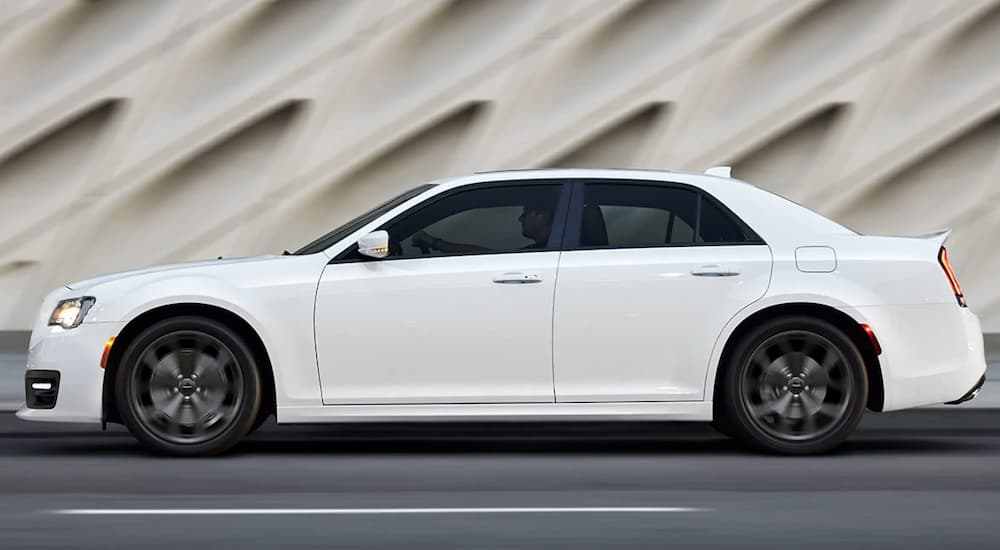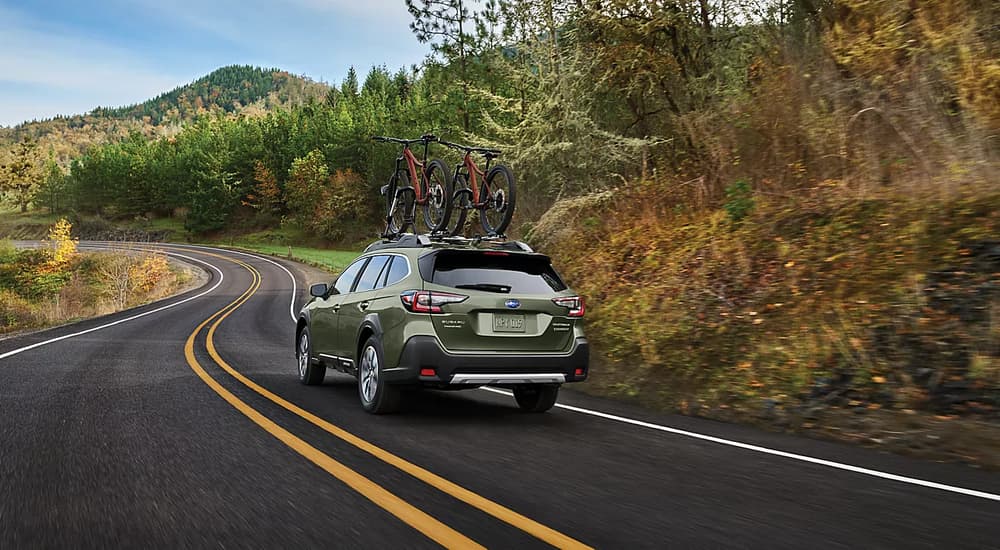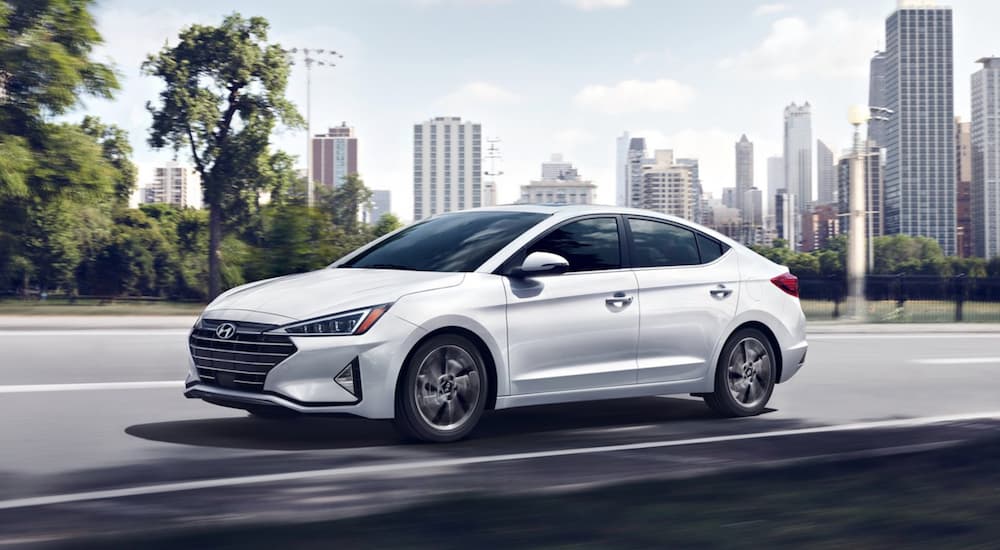Several scenarios may prompt you to consider trading in your car, especially if you’ve recently accepted a new job with a longer commute or need a larger vehicle to shuttle your growing family. Your current vehicle may not work for you anymore, and you may ask yourself, “How do I value my trade?” You want to ensure you’re getting the best trade-in value for your car, as well as the right vehicle for your new travel or commute circumstances, and it all starts with your trade-in value. So, what is a trade-in value? Here’s what you need to know about the vehicle trade-in process.

What Is a Trade-In Value?
Trade-in value refers to how much a dealership is willing to offer you for your current car to put towards the purchase of a new (or used) vehicle. When you’re looking for a new car, trading in your current vehicle allows you to use this money to help lower your monthly payments, thereby helping you afford a car with all the bells and whistles you need for your daily journey. How the value of your vehicle is determined starts with the market price. This is determined by utilizing certain tools in the industry, like Kelley Blue Book or NADA Guides; however, many dealerships have their own software to determine a more accurate value.
It’s not just the market price that sets the value of your car. The dealership will also take into consideration factors like current mileage, the condition of the vehicle, special editions or packages, and so forth. This means that even though a tool, like Kelley Blue Book, says one value for your car, the real value is dependent more so on your particular car and the condition that it’s in. Dealerships are looking for cars to add to their used inventories that their local buyers want, which means that certain makes and models may be offered more money when they’re traded in. Keep in mind that some brands carry higher resale values than others due to their dependability, safety, and overall reputation in the industry, and will warrant higher payouts during the trade-in process.

When Should You Consider Trading In Your Car?
Drivers often consider trading in their vehicles when their current vehicle no longer meets their needs. As we mentioned above, this could be because of a growing family or new driving needs, which may warrant the purchase of a car that’s more tailored to these needs. For instance, your compact sedan may not work for three children anymore, prompting you to trade it in for a larger SUV or minivan. Your current vehicle may be unable to take on tasks on the job, which could prompt you to consider trading it in for a truck. These are just a couple of examples of why drivers trade in their vehicles, but it’s always advised to consider your finances above all else.
It’s a good idea to have positive equity in your vehicle before you consider beginning the trade-in process. Positive equity occurs when you owe less on the vehicle than it’s currently worth, allowing you to take advantage of a profit from trading it in, a profit that can be put towards your new vehicle. Owing more than the vehicle is worth puts you at a disadvantage because this amount is then rolled into your new loan if you’re unable to pay off the loan amount on your current vehicle. For this reason, many drivers tend to hold off on trading in their vehicle (if they can) until they’ve made enough significant payments to put them in the black.
Tips for a Successful Trade
If you’re confident that trading in your car is the right move for you, it’s important to prepare for what’s to come with the process. This is why the first thing you should do is research the current value of your vehicle to get an idea of what it’s worth. There are some valuation tools online that you can utilize, but keep in mind that these are just loose figures that do not yet account for the condition of your vehicle or the other aforementioned factors. In addition to this research, you should also find out what you owe on your vehicle to ensure it’s the right time and the right financial move to sell.
It’s important to note that shopping around at different dealerships is recommended to ensure you get the best price for your car. It’s also beneficial to ensure that the dealership in question has a selection of vehicles that meets your current needs. After all, you need to be able to find a new car to replace your current model, and it must meet your specifications.
Speaking of your current vehicle, it’s a good idea to make sure it’s presenting at its best before you trade it in. From simple tasks like running it through the car wash and removing personal items to more serious repairs, doing what you can before trading it in always helps—and it may even make such a better impression on the dealer that they will price it higher than they would were it unseemly.
Preparing for the trade-in process is also essential, which means you’ll want to gather the necessary documentation needed to complete the process. This may include your vehicle’s registration, loan information, title (if it’s paid off), maintenance documents, and identification. This will ensure that the process goes as smoothly as possible.

Avoid These Pitfalls
Ensuring that you’re maximizing your success with the process is the goal of trading in your vehicle, and you’ll be able to achieve this by avoiding some common mistakes. The first mistake is not knowing what your vehicle is worth. This can mean losing out on money and having less to put towards your next vehicle. Another mistake that drivers make is partnering with the wrong dealership—one that may not offer you what you deserve for your vehicle or one that doesn’t provide you with the inventory you need for your half of the trade-in. This is why shopping around and finding the right fit is extremely important.
Lastly, failing to take care of your vehicle can result in being offered less money during the trade-in process. Through routine maintenance and frequent car care, you can ensure that your vehicle is in the best shape it can be so that you can show its potential to the dealership and receive as much money for it as possible. It all stems from doing a little research and the proper preparations, so take some time to do these things before bringing your vehicle around to a prospective dealer.
Valuing Your Trade
Your vehicle may have provided you with years of enjoyment on the open road, and you want to ensure you’re getting the money you deserve for it. When you’re looking to trade in your vehicle, knowing what to expect and being prepared can mean the difference between success and disappointment. So, remember these tips and be sure to team up with a reputable and fair dealership because this can make or break the trade-in.
Not only do you want to show the dealership that your car is one in a million, but you also want to find a better fit for your future travels. Working with a dealership that places the customer first will ensure your overall satisfaction with the vehicle trade-in process.



